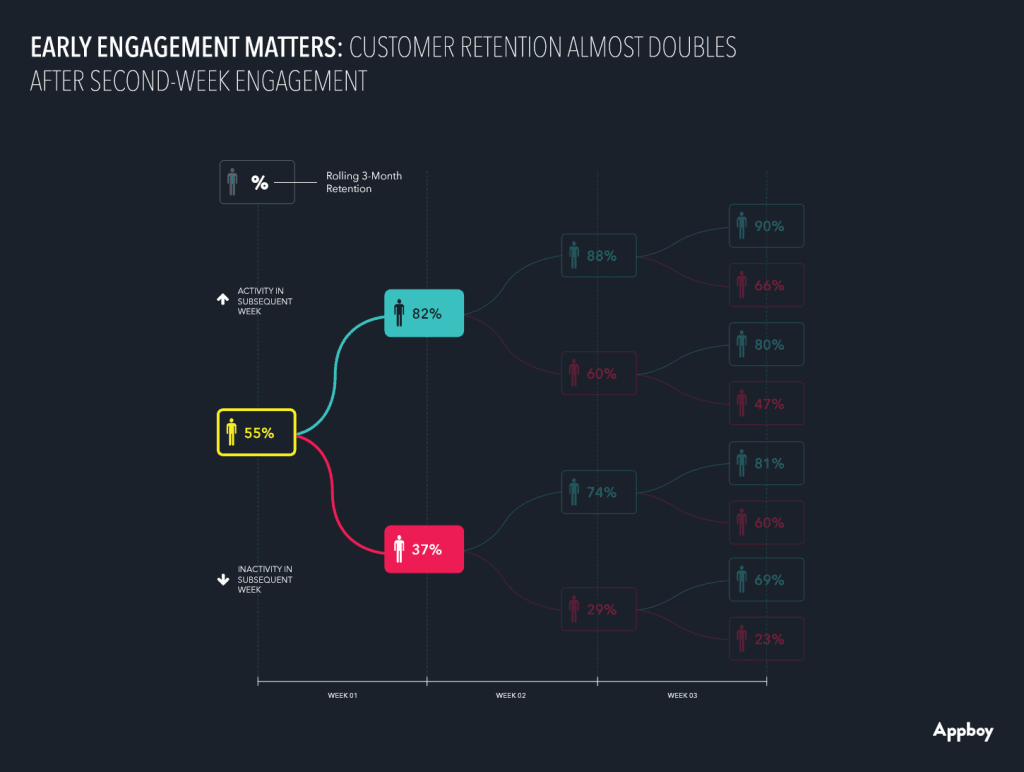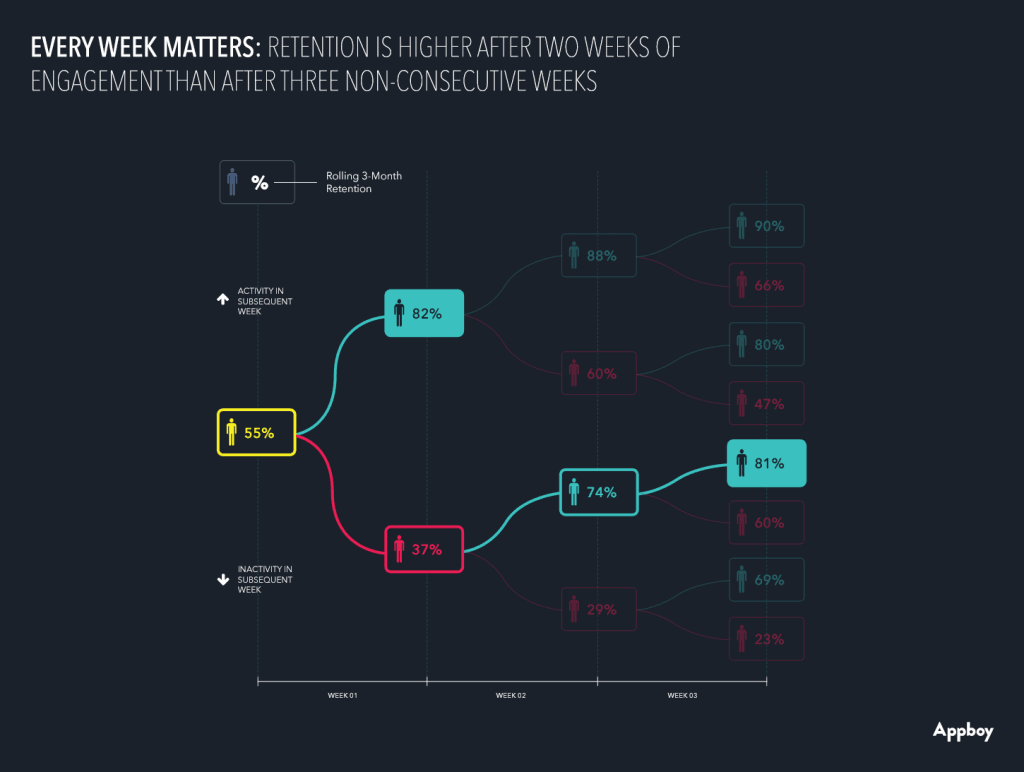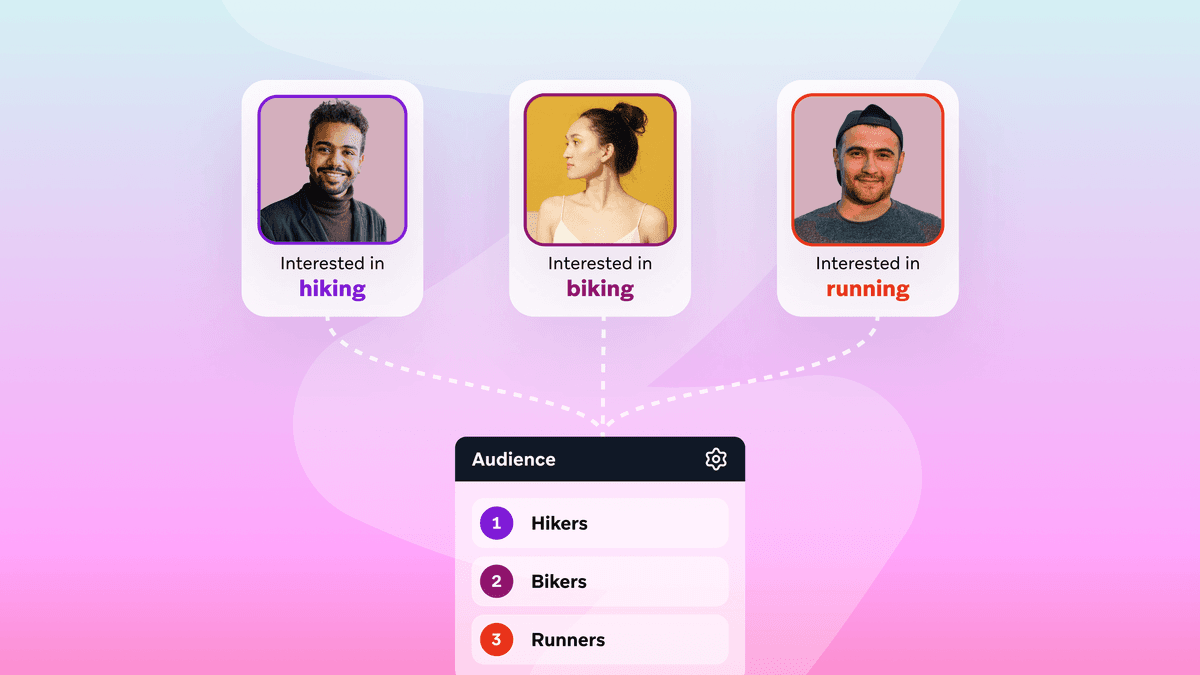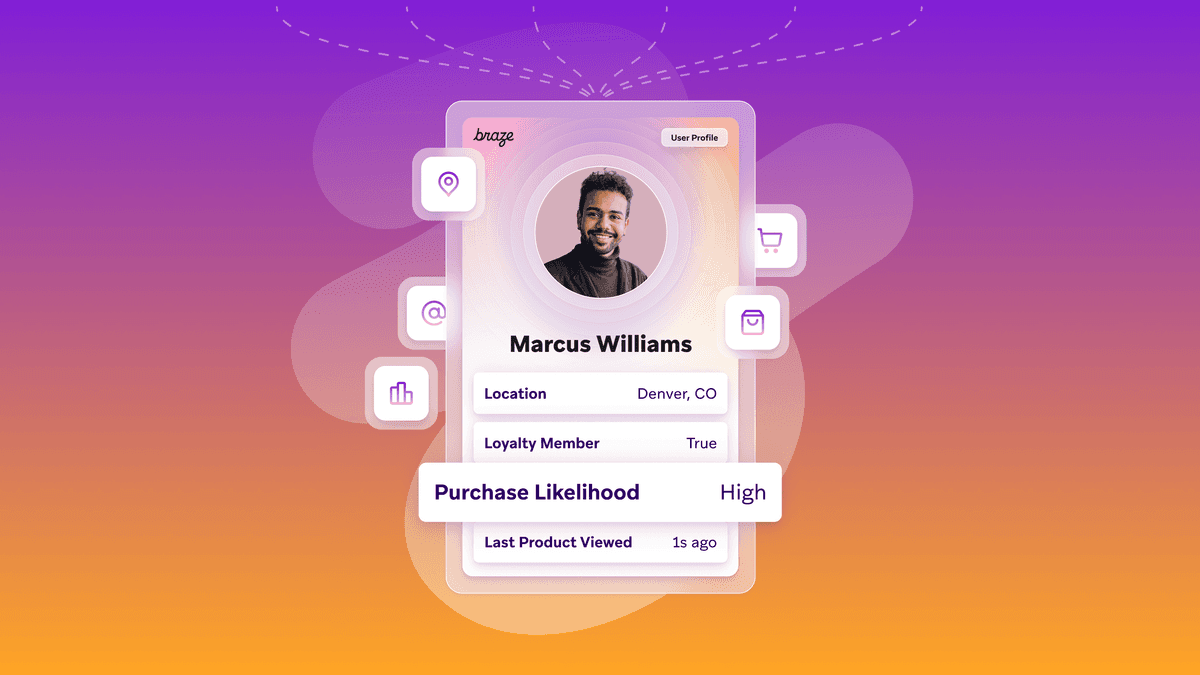How to Inspire Consistent Engagement (and Boost Retention, Too)
Published on November 18, 2015/Last edited on November 18, 2015/8 min read


Todd Grennan
Managing Editor, Content Marketing at BrazeEarlier this month, Appboy (AKA us!) published new research that uncovered a direct correlation between how consistently a customer engages with an app and the likelihood that they’ll still be making use of the app three months later. The study–which looked at approximately 200 apps, 100 million customers, and five billion sessions–also found that this trend remained consistent across different mobile operating systems and verticals.
That means that apps that successfully convince new customers to engage in a consistent manner are well positioned to retain their audience, making it easier to build durable customer/brand relationships over the long haul. To help you get there, we’re going to dig into the findings and walk you through best practices for consistently engaging (and re-engaging) your customers. Let’s get started!
How consistent engagement impacts retention
App usage is like any other ritual. People who get into the habit of using an app are training themselves to become loyal customers, increasing the chances that they’ll continue making use of it in the future. But the same principle applies in reverse: weeks without engagement with an app get customers used to not engaging, reducing the chances that they’ll return.
The retention gains (or losses) level out after a few weeks, but even a small change in the consistency of engagement can have a major impact. That means that any shift away from a regular pattern of engagement puts a customer’s retention at risk.
Starting off strong: Hook them early with effective onboarding
Whether or not a customer engages with your app in the second week after download is one of the biggest indicators of whether they’re going to churn or become a loyal long-term customer. People who do return during that second week have a retention rate of 82%*, more than twice the 37% retention rate seen for those who don’t engage with the app in week two.

That means that finding ways to engage your new customers right off the bat is an essential part of building strong long-term retention. To do that, you need to get onboarding right.
Putting together a great onboarding experience
1) Start right away
Customers who open your app for the first time and have no idea what it’s capable of and how it can fit their needs don’t have much reason to come back. That means that it’s important to begin onboarding them during that very first session.
2) Walk people through your app and what it can do
Onboarding is about teaching new customers what’s possible. Identify the most compelling aspects of your app and make sure that they’re covered thoughtfully during the onboarding process. If someone can complete your onboarding process and still not know what your app’s purpose is and how to use it effectively, then you need to change things up.
3) Keep it brief (but follow up)
Too much information too quickly can overwhelm new customers. Keep the initial onboarding session high-level and focused on the value your app can provide. Then use in-app messages to provide additional guidance as they explore, nudging them toward deeper engagement.
Sending smart onboarding campaigns
1) Keep an eye on who didn’t finish onboarding
Just because you create an awesome onboarding process for new customers doesn’t mean that all of them will decide to complete it the first time. Use audience segmentation to create a segment containing new customers who began onboarding but didn’t finish, then reach out to them to encourage completion.
2) Use multi-channel campaigns to reach them
When it comes to convincing customers to make the most of your onboarding process, every little bit counts. Brands that send a reminder push notification to customers who haven’t completed the onboarding process see two-month retention rise by 71%. That percentage hits 130% if they pair that push with outreach in a second messaging channel (like in-app messages or email) as part of a multi-channel campaign.
Reward good behavior: Keep them loyal with active customer campaigns
Even a single week that customers don’t engage with your app leads to a big drop in retention levels. Our research found that people who engage for two consecutive weeks after download had a retention rate of 82%, while those who didn’t engage in week two had to engage for the next two straight weeks to get back to that level of retention–and they don’t even quite get there, peaking at 81%.

It’s like any other habit–once you establish a routine, it’s easier to keep it up because you’re already primed to keep doing what you’ve been doing. But once you break that habit, it takes effort to get back to where you were. Habits stick when they become unconscious, when you’ve become so used to doing something at a certain time or for a certain reason that you no longer have to think about that trigger for it to have an effect.
To keep app usage consistent, brands need to encourage deeper engagement using messaging campaigns focused on their active customers.
Drive regular engagement with active customer campaigns
1) Figure out who your active customers are
For a lot of apps, it makes sense to consider someone who logs a session at least once a week to be an “active” customer who is regularly engaging with your brand. But every brand will necessarily have its own definition of an active customer, based on the regular usage patterns they see. Consistency is the key–a customer who keeps to their established pattern should probably be considered active, while one who starts tapering off their engagement even a little is likely lapsing.
2) Encourage deeper engagement with insights and deals
Customers need a reason to use your app. Use your active customer campaigns to point out new features and capabilities that they haven’t explored before. Take advantage of your knowledge about how they’ve used the app to date to personalize your outreach, making it more relevant to their interests. And consider rewarding customers for their loyalty and consistent engagement with exclusive discounts and rewards. The more deeply you can encourage active customers to engage with your app, the easier it’ll be to keep them around.
3) Keep an eye on your results (and keep refining)
Not every campaign you send will be a winner. So pay close attention to how each message impacts engagement, push notification opt-outs, and uninstalls among your active customers. These results will give you the guidance you need to improve your outreach to these customers over time. After all, great messaging isn’t a one-and-done thing: it needs to evolve and change along with your customer base.
Change isn’t always good: Identifying and engaging lapsing customers
Okay, so consistent customer engagement makes for great retention rates. But what about the members of your audience who are already engaging less with your app?
While customer retention rates drop every week without engagement, the declines flatten out after two consecutive weeks–and even a single instance of engagement can change the equation for the better. People who don’t engage with your app during the second and third week after install only have a retention rate of 29%. But if they subsequently engage in week four, their retention rate more than doubles, hitting 69%.

That means that while a customer with a gap in their engagement is definitely a cause for concern, you still have a real chance to win them back with an effective lapsing customer campaign.
Reach out to lapsing customers the right way
1) Escalate your re-engagement efforts as time goes on
A customer who has a strong pattern of engagement and deviates from it by failing to use your app one week may only need a nudge–like a personalized push notification highlighting a cool new feature or product–to get back into the habit. But if that isn’t enough to re-establish using your app as one of their regular rituals, you may need to offer more compelling incentives (such as significant discounts, exclusive access to content, or messages highlighting their friends’ app usage) to entice them back.
2) But be smart about reaching out to genuinely inactive customers
When it comes to lapsing customers who have opted out of push notifications or uninstalled your app, your options for reaching are more limited. Use the channels open to you, but keep an eye on whether the campaigns you send are having an impact–you want to re-engage lapsed customers, not annoy them. And if you decide to use email, be careful not to keep sending them re-engagement messages indefinitely through that channel. Sending email to too many unengaged recipients can endanger your ability to reach even your most loyal customers, so it’s smart to set up sunset policies that halt emails after a certain point to customers who just aren’t engaging.
The gist
Consistent engagement is key when it comes to retaining your app’s customers. And brands that put in the work to cultivate and build relationships with active customers, and take the time to reach out to people who have started to lapse with targeted re-engagement campaigns have a big advantage when it comes to long-term retention and monetization.
*For the purposes of this research, weeks are calculated as intervals of seven days following the date of a customer’s first session. Customers were counted as retained if they carried out further activity at some point during the three-month period following the reference week.
Related Tags
Be Absolutely Engaging.™
Sign up for regular updates from Braze.




